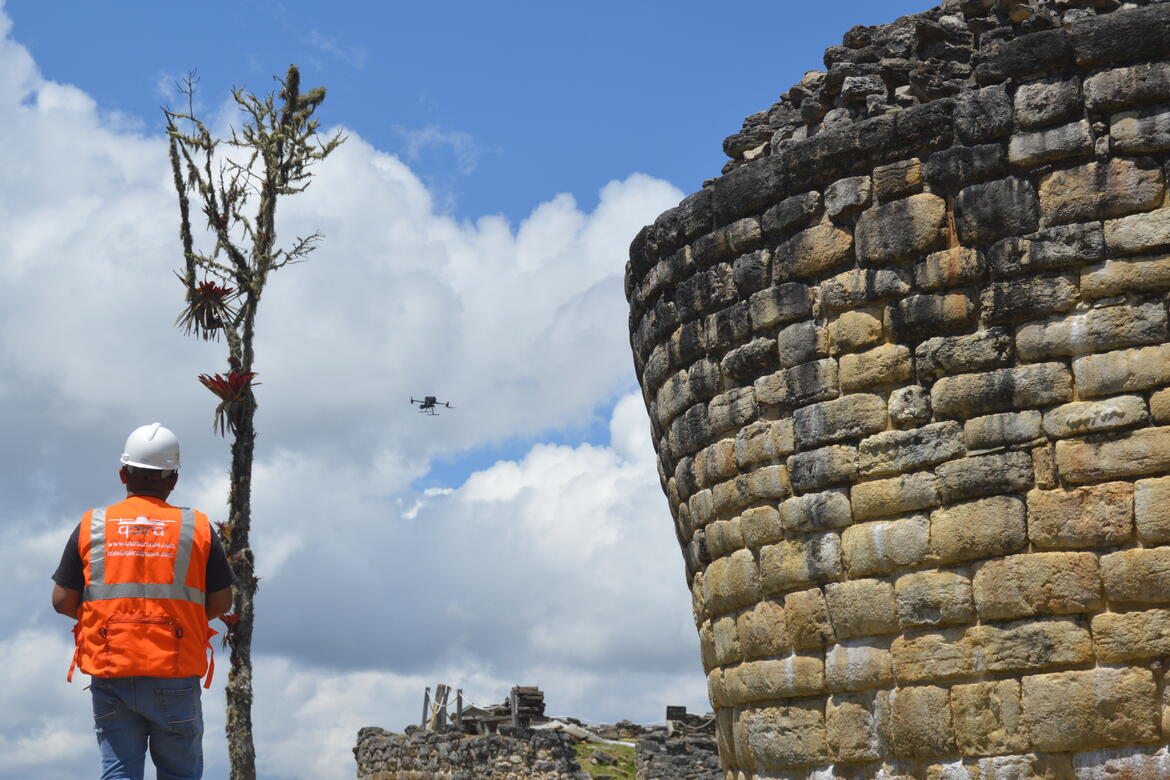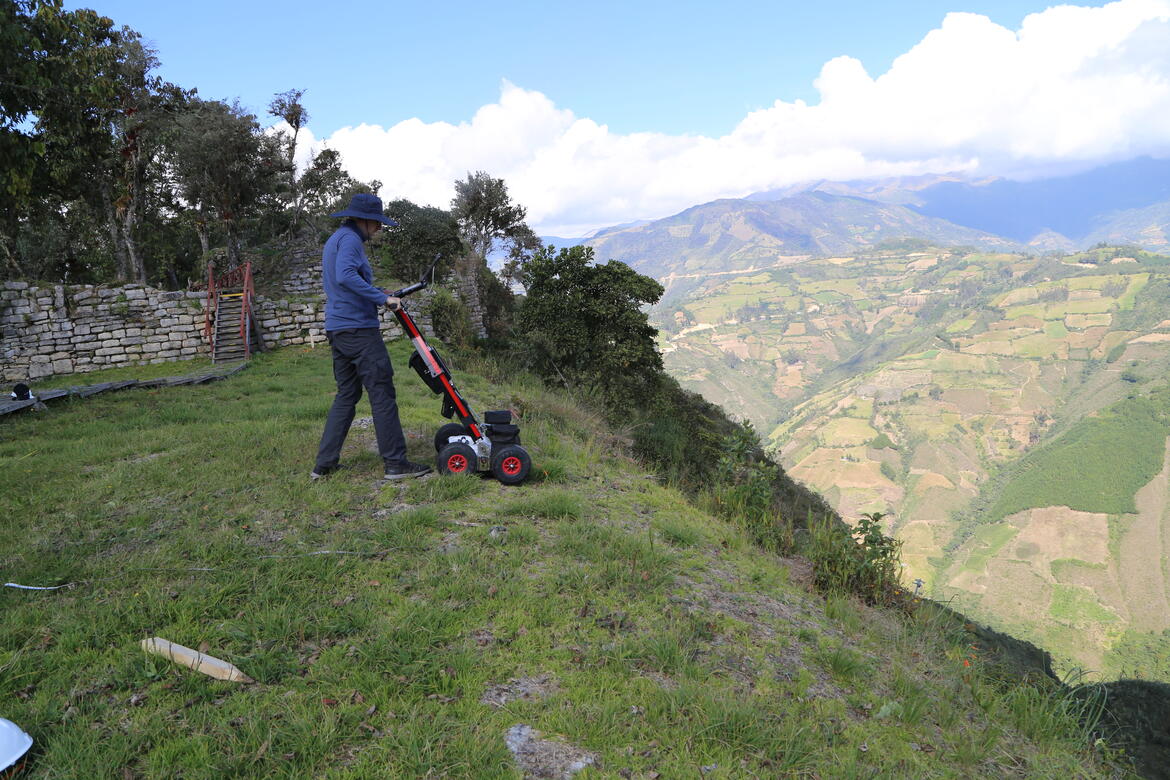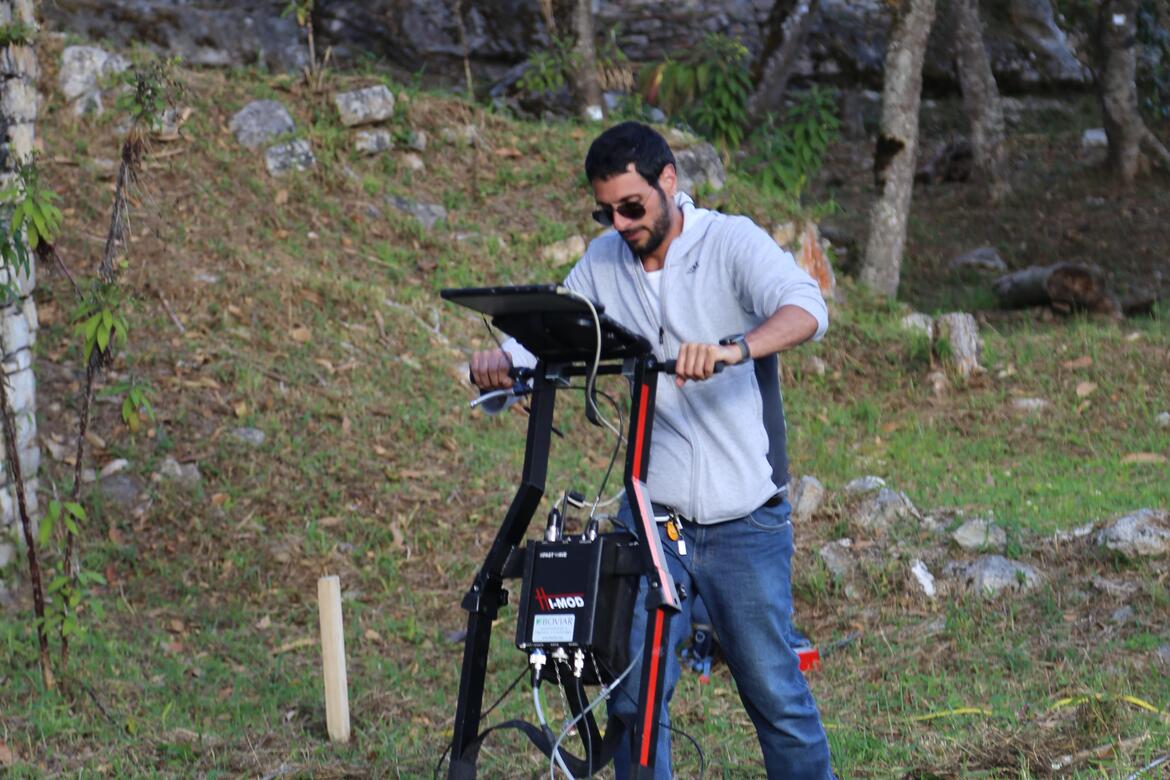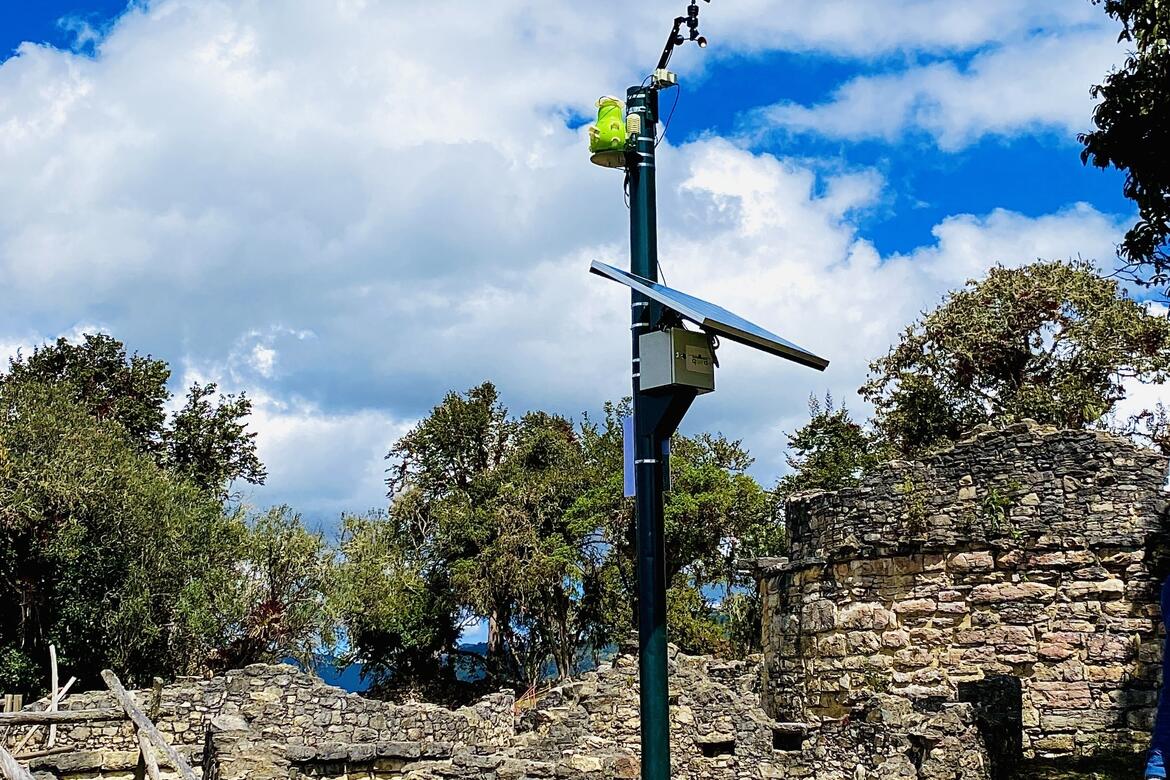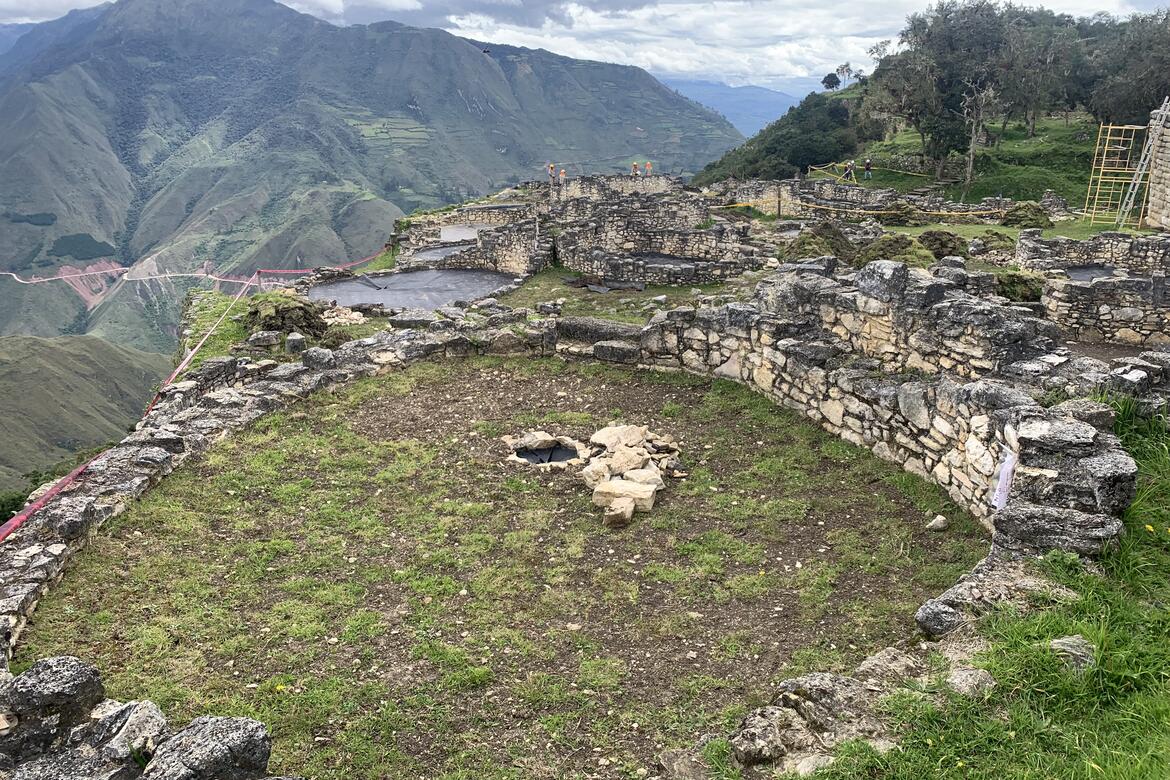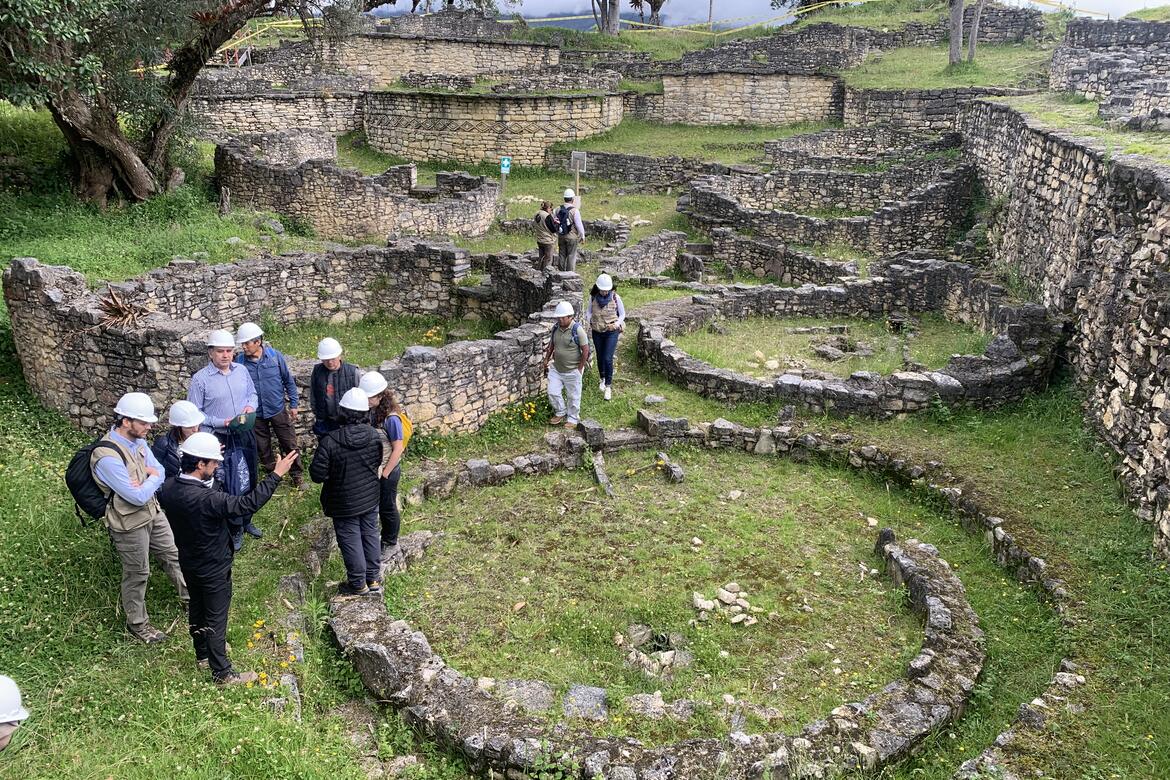The Preservation of Kuelap: Technological Innovation and Inter-Institutional Support
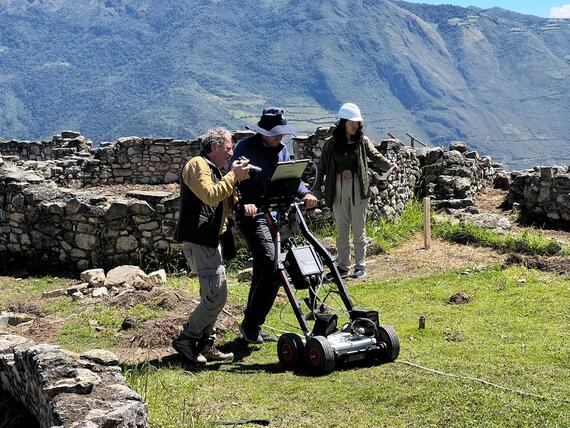
Kuelap Fortress, the iconic archaeological site of the Chachapoya culture in the Upper Utcubamba Valley of the Amazonas Region, is in the process of being preserved after the collapse of two sections of its walls in 2022. World Monuments Fund (WMF) Peru has been supporting Peru’s Ministry of Culture and other national and international allies in this challenging task.
WMF's intervention in Kuelap is not a recent phenomenon since the fortress was included in the World Monuments Watch in 2004 to draw attention to its fragile condition. At that time, WMF carried out conservation work on the upper level of the Templo Mayor and the perimeter wall of Pueblo Alto, which contributed to visitors' access as part of the regular tour.
Responding to the collapse that occurred in April 2022, WMF began offering support in September of that year, facilitating a donation from the Peruvian enterprise qAIRa of a drone-operated LiDAR survey. The sophisticated technique helped obtain 3D images of the entire fortress. This information was essential in order to understand the status of the heritage site.
In November of the same year, WMF received emergency funds from the United States Department of State through the Ambassador's Fund to conduct a diagnostic study of the monument’s structural movement using satellite radar. Under the leadership of Dr. Iván Ghezzi and a group of specialists from the Italy’s National Research Council (CNR), the team carried out a compilation and analysis of satellite images from different years—a technique called MT-InSAR—a tool which has allowed continuous monitoring and interpretation of the deformations that occurred in Kuelap.
Furthermore, the reconstruction of climate information using satellite technology from the last four decades of precipitation suggests that one of the leading causes of the perimeter wall’s collapse was the extraordinary rains that occurred between 2018 and 2022. This indicates that climate change is one of the major causes of this collapse.
The investigation also involved the use of a Mavic 3 Thermal infrared drone, which has made it possible to identify preliminarily new architectural elements in the fortress. New circular structures have been found, typical of the area, which are interpreted as homes and do not appear on the site plans because they are below the surface.
In July 2023, a new weather station was installed as part of another collaboration with qAIRa, with complementary funding from members of the WMF Peru Board of Trustees. This technology is known as qHAWAX, a continuous air quality monitoring module that can detect the amount of particulate matter in the air, as well as the weather variables of atmospheric pressure, wind, temperature, precipitation, and humidity. The data will continue to be compiled over the next months to understand the monthly climate variations in order to assess the potential effects on the archaeological site.
It is worth highlighting the fundamental role of Pacto por la Cultura, a UNESCO Peru platform that has allowed for the formation of an alliance between the Ministry of Culture, the Pontifical Catholic University of Peru, and other organizations, aiming to coordinate for the comprehensive preservation of Kuelap. The alliance has been growing with new national and foreign institutions, such as the Getty Conservation Institute.
In summary, the goal is to guarantee the success of the Ministry of Culture’s Archaeological and Interdisciplinary Research Program for the Purposes of Research, Conservation, and Enhancement of the Kuelap Archaeological Complex (PRIA-K), headed by the archaeologist José Bastante. This involves specific scientific and technical support, as well as the dissemination of achievements and the challenges they address. The urgency of identifying the causes of Kuelap’s deterioration has opened doors toward technological innovation in the management of cultural heritage conservation projects. This approach incorporates new variables and considers the impact of climate change in the implementation of cutting-edge technologies that are transforming the way we preserve our heritage.
The preservation of Kuelap is the job of everyone, as it is the most important archaeological monument in northeastern Peru, a symbol of the Amazonas Region. The site must be preserved for the enjoyment of future generations. Visit Kuelap and contribute to its safeguarding with us.

